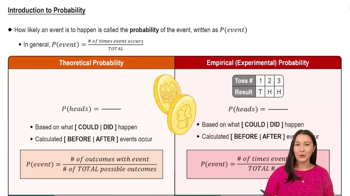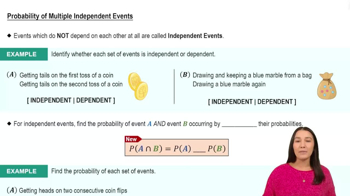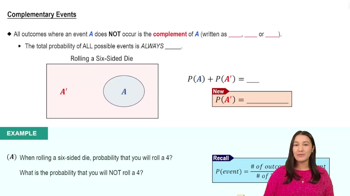Here are the essential concepts you must grasp in order to answer the question correctly.
Probability
Probability is a measure of the likelihood that an event will occur, expressed as a number between 0 and 1. In this context, it involves calculating the chance of selecting a person who is either male or does not wear glasses from the total sample of 3203 individuals. Understanding how to compute probabilities using the total number of favorable outcomes divided by the total number of possible outcomes is essential.
Recommended video:
Introduction to Probability
Union of Events
The union of events refers to the occurrence of at least one of the events in question. In this scenario, we are interested in the union of two events: being male and not wearing glasses. The probability of the union can be calculated using the formula P(A ∪ B) = P(A) + P(B) - P(A ∩ B), which accounts for any overlap between the two events.
Recommended video:
Probability of Multiple Independent Events
Complementary Events
Complementary events are two outcomes of a situation that are mutually exclusive and together cover all possible outcomes. In this case, the event of not wearing glasses can be understood as the complement of wearing glasses. Recognizing complementary events helps in calculating probabilities more efficiently, especially when determining the likelihood of an event not occurring.
Recommended video:

 Verified step by step guidance
Verified step by step guidance Verified video answer for a similar problem:
Verified video answer for a similar problem:



 5:14m
5:14m